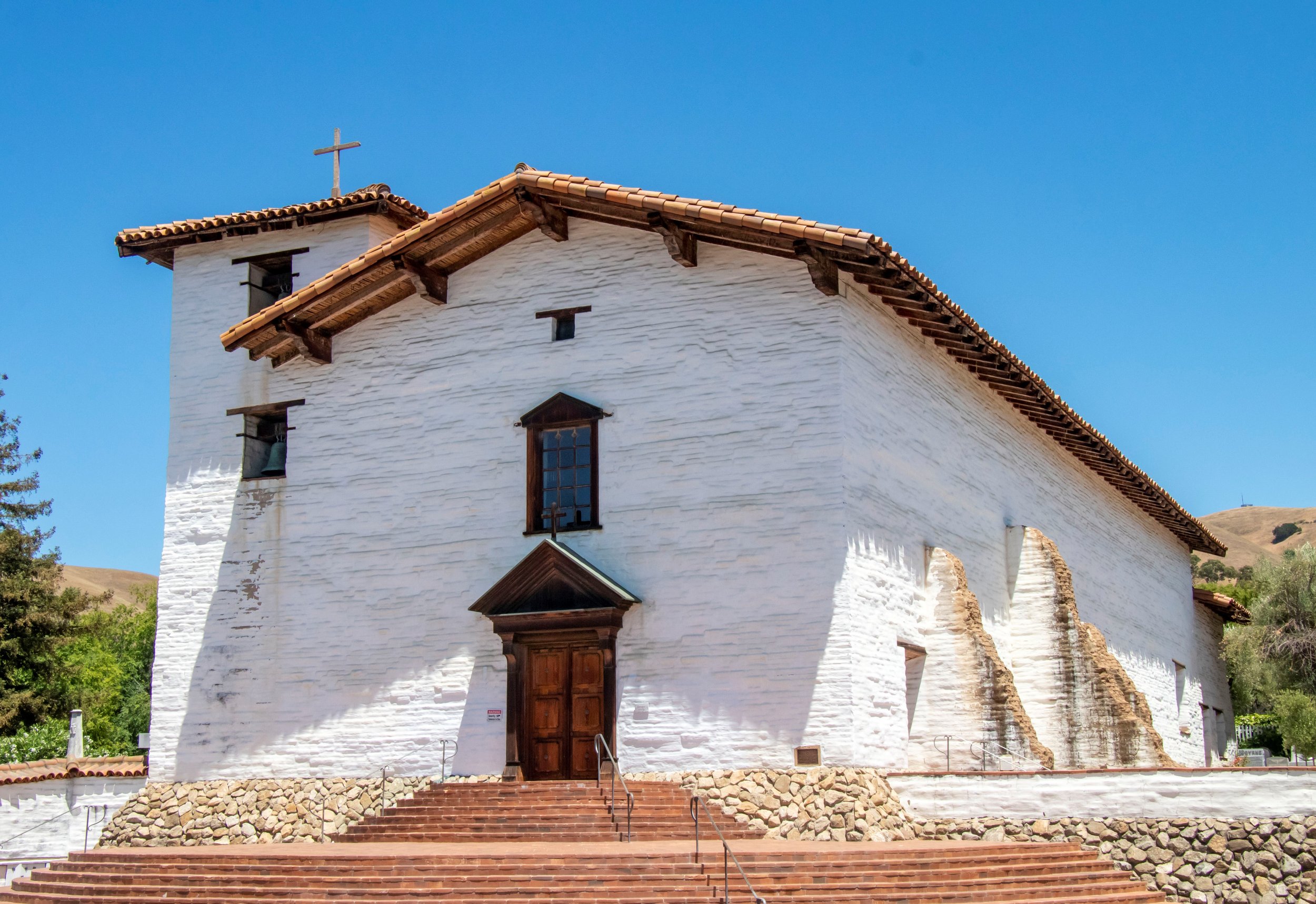The Story of Mission San Jose
The Mission Era
Mission San Jose was founded on June 11, 1797 by Father Fermin Francisco de Lasuen on a site which was part of a natural highway by way of the Livermore Valley to the San Joaquin Valley. It is the fourteenth of the 21 Spanish Missions in Alta California. They were founded to secure Spain's claim to this land and to teach the native people Christianity and the Spanish way of life. Read a detailed description of the first Founder’s Day.
The site chosen for the only mission on the east side of San Francisco Bay had been inhabited for countless generations by the Ohlone Indians. Their village at this site was known as Oroysom. The Ohlones lived close to the land in harmony with nature, taking what they needed for their sustenance but never wasting irreplaceable resources. What we could call ecology was a way of life for them. Their food included seeds, roots, berries, acorn meal, small game and seafood.
Three years after the founding of Mission San Jose, several hundred Ohlones had come to live at the Mission. They were introduced to a new way of life by the Spanish Franciscan missionaries. Thousands of cattle roamed the mission ranges. Acres of wheat and other crops were planted and harvested under the direction of the padres. A fully developed mission was a self-sustaining village. It was occupied by local natives, a few soldiers, several artisans with families, and one or two priests. According to Spanish law, the mission's lands and resources belonged to the natives and would be put in their control when they had learned to manage themselves in the Spanish way.
Secularization
Mexico won its independence from Spain in 1821. The California Missions continued to prosper under Mexican rule until the Secularization Act of 1833. In 1836, Jose Jesus Vallejo was appointed civil administrator of Mission San Jose. The lands were divided into ranchos and transferred to local prominent Mexican families. What was left of the Mission began to decline, and over time, the native populations were scattered. Very few were given their land, and many died of disease and starvation. After California achieved statehood in 1850, the United States government returned a small portion of the land back to the Catholic Church, and the church became St. Joseph Parish in 1853.
The Gothic Church
A tremendous earthquake in 1868 on the Hayward Fault destroyed the 1809 adobe church. The rubble was cleared away and within a short time a new church of wood in Gothic style was under construction directly above the tile floor and stone foundation. This church served as St. Joseph parish church until 1965 when a new combination church-hall was completed for the growing St. Joseph’s Parish. The old wooden church was retired after 96 years of service.
Plans were formed in 1973 to rebuild the 1809 adobe church on its original site, and relocate the 1869 wooden church to another location. After much effort and pending demolition, the Committee for the Restoration of Mission San Jose found a home for its beloved former house of worship. The Gothic Church was conveyed in 1982 to Christ Church Anglican Catholic Church in San Mateo. It was moved across the Bay in four pieces, renovated and dedicated in 1986. The Anglican community restored its original identity as St. Joseph Church in 2014.
The Reconstruction of the Adobe Church
The reconstruction of the entire adobe church, was completed in 1985. It is said to be one of the most authentically reconstructed of the California missions. Original materials and building methods were used to the extent possible. The reconstruction was a joint effort with the Diocese of Oakland. Sir Richard Menn, the distinguished California missions master craftsman, served as consultant, principal investigator, art restorer and conservator. More information about Sir Richard Menn can be found in the California Missions Foundation publication, Boletín, Volume 36, Number 1, 2020, by Dr. Rubén Mendoza.
More about the Historic Mission San Jose
Why was the Mission in Fremont named "Mission San Jose?”
Contrary to what you may have read in most books, we are not the Mission San Jose de Guadalupe. In the early part of the 1900's, a sign was erected on the roof of the Museum which said "Mission San Jose de Guadalupe." Many books have since been published and, unfortunately, the authors use this reference in their stories. When this Mission was founded it was named "La Mision del Gloriosisimo Patriarch San Jose" in honor of St. Joseph. All of our record books refer to the Mission as Mission San Jose. Though the pueblo (city) of San Jose was founded 13 miles south near the Guadalupe River, the only connection between the pueblo and the Old Mission is that both were named in honor of St. Joseph.
Timeline
July 16, 1769 - Padre Junipero Serra founded the first mission, Mission San Diego de Alcalá.
June 11, 1797 - Mission San Jose founded by Padre Fermin Francisco de Lasuen.
1809 - Adobe brick and redwood timber Mission Church dedicated.
1868 - Earthquake destroyed adobe church and many nearby buildings. West wing which housed the convento was left standing. It contains the present Mission San Jose Museum.
1982 - Commencement of reconstruction of Mission San Jose adobe church as it appeared in the 1830s.
1985 - Reconstructed adobe church completed.
2001-2002 - The museum building was seismically retrofitted.



